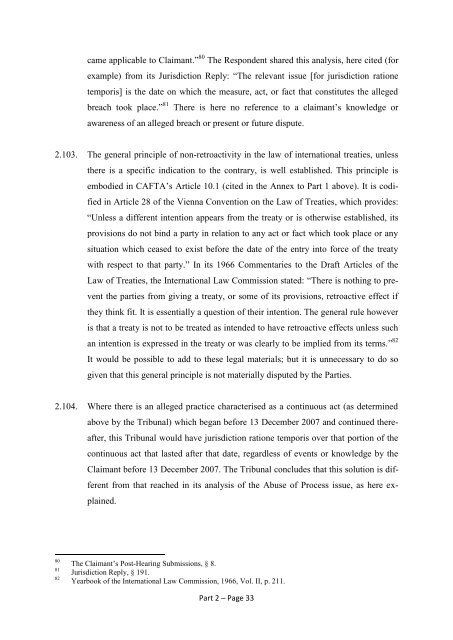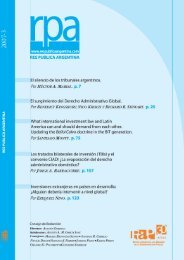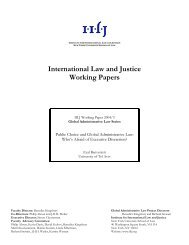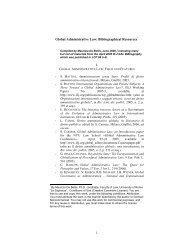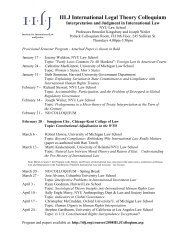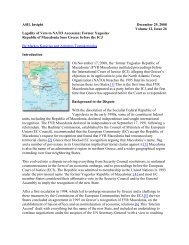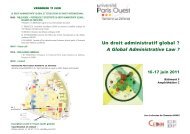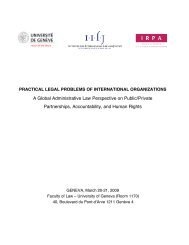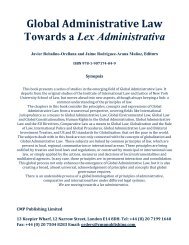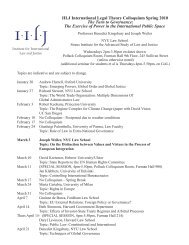brought under the dominican republic - central america - ita
brought under the dominican republic - central america - ita
brought under the dominican republic - central america - ita
Create successful ePaper yourself
Turn your PDF publications into a flip-book with our unique Google optimized e-Paper software.
came applicable to Claimant.” 80 The Respondent shared this analysis, here cited (for<br />
example) from its Jurisdiction Reply: “The relevant issue [for jurisdiction ratione<br />
temporis] is <strong>the</strong> date on which <strong>the</strong> measure, act, or fact that constitutes <strong>the</strong> alleged<br />
breach took place.” 81 There is here no reference to a claimant‟s knowledge or<br />
awareness of an alleged breach or present or future dispute.<br />
2.103. The general principle of non-retroactivity in <strong>the</strong> law of international treaties, unless<br />
<strong>the</strong>re is a specific indication to <strong>the</strong> contrary, is well established. This principle is<br />
embodied in CAFTA‟s Article 10.1 (cited in <strong>the</strong> Annex to Part 1 above). It is codified<br />
in Article 28 of <strong>the</strong> Vienna Convention on <strong>the</strong> Law of Treaties, which provides:<br />
“Unless a different intention appears from <strong>the</strong> treaty or is o<strong>the</strong>rwise established, its<br />
provisions do not bind a party in relation to any act or fact which took place or any<br />
situation which ceased to exist before <strong>the</strong> date of <strong>the</strong> entry into force of <strong>the</strong> treaty<br />
with respect to that party.” In its 1966 Commentaries to <strong>the</strong> Draft Articles of <strong>the</strong><br />
Law of Treaties, <strong>the</strong> International Law Commission stated: “There is nothing to prevent<br />
<strong>the</strong> parties from giving a treaty, or some of its provisions, retroactive effect if<br />
<strong>the</strong>y think fit. It is essentially a question of <strong>the</strong>ir intention. The general rule however<br />
is that a treaty is not to be treated as intended to have retroactive effects unless such<br />
an intention is expressed in <strong>the</strong> treaty or was clearly to be implied from its terms.” 82<br />
It would be possible to add to <strong>the</strong>se legal materials; but it is unnecessary to do so<br />
given that this general principle is not materially disputed by <strong>the</strong> Parties.<br />
2.104. Where <strong>the</strong>re is an alleged practice characterised as a continuous act (as determined<br />
above by <strong>the</strong> Tribunal) which began before 13 December 2007 and continued <strong>the</strong>reafter,<br />
this Tribunal would have jurisdiction ratione temporis over that portion of <strong>the</strong><br />
continuous act that lasted after that date, regardless of events or knowledge by <strong>the</strong><br />
Claimant before 13 December 2007. The Tribunal concludes that this solution is different<br />
from that reached in its analysis of <strong>the</strong> Abuse of Process issue, as here explained.<br />
80<br />
81<br />
82<br />
The Claimant‟s Post-Hearing Submissions, § 8.<br />
Jurisdiction Reply, § 191.<br />
Yearbook of <strong>the</strong> International Law Commission, 1966, Vol. II, p. 211.<br />
Part 2 – Page 33


